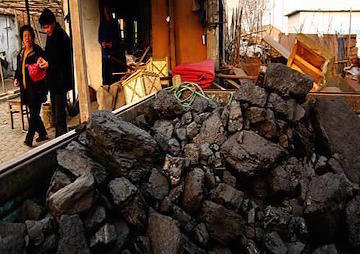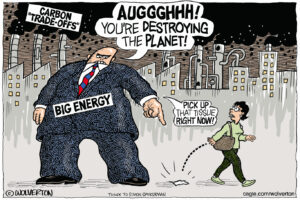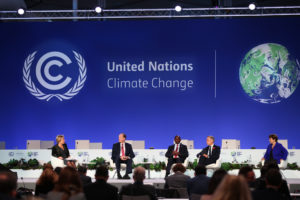Renewables Are Raising Stop Signs
With carbon dioxide levels in the atmosphere the highest for 800,000 years, news of a possible halt this year in the rise of greenhouse gas emissions provides a boost for climate talks.
By Tim Radford / Climate News Network

Reducing China’s dependence on coal is vital to slowing carbon dioxide emissions. (Tod Baker via Flickr)
This Creative Commons-licensed piece first appeared at Climate News Network.
PARIS — This could be the year when carbon emissions stopped rising and when greater efficiency and a shift to wind and solar power began to slow the rate at which humans dump carbon dioxide from fossil fuels into the atmosphere.
The news of a possible halt in greenhouse gas emissions comes as government ministers from 190 nations enter the second week of negotiations at the COP21 summit in Paris to agree worldwide action on climate change.
It could be just a statistical blip. But, if not, the news augurs well for a concerted effort to switch the world towards renewable sources of energy and to limit climate change.
Robert Jackson, professor of Earth system science at Stanford University in the US, and Corinne Le Quéré, director of the Tyndall Centre for Climate Change Research at the University of East Anglia, UK, and colleagues publish their reasoning and calculations separately and simultaneously in the journals Nature Climate Change and Earth System Science Data.
Economic growth
They say that emissions could decline by 0.6%. And although declines have happened before — an economic slump means a drop in energy demand — this is the first to happen in a period of strong economic growth. For most of this century, emissions have risen every year by 2% or 3%. But 2015 could be different.
“What we are now seeing is that emissions appear to have stalled, and they could even decline slightly in 2015,” says Professor Le Quéré.
“But it is important to remember that our projection for 2015 is an estimate, and there will always be a range of uncertainty. In this case, the 2015 projection ranges from a global decline in emissions of up to 1.5 per cent — or, at the other end of the spectrum, a small rise of 0.5 per cent.”
“We are still emitting massive amounts of CO2annually. There is a long way to near-zero emissions”
China, the world’s biggest emitter, has burned less coal, and whether the reduction is sustained continues to depend on the nation’s use of coal. But more than half of all its new energy demand in 2014 was met from hydro, nuclear, wind and solar power.
China is responsible for 27% of global emissions, the US 15%, the EU 10% and India 7%. But in terms of energy emissions per head of population, the picture is different: the US total is 17.4 tonnes per capita, China 7.1 tonnes, the EU 6.8 tonnes, and India 2 tonnes.
“The most promising finding in our report is the coupling of lower carbon emissions with a strong economic growth of more than 3%,” said Professor Jackson, of the Stanford Woods Institute for the Environment and the Precourt Institute for Energy.
Massive amounts
“But even if we reach peak global emissions within a decade or two, we’ll still be emitting massive amounts of CO2 from burning fossil fuels.”
Professor Le Quéré isn’t betting that the stall in emissions is permanent. And, even if it were, that would still not be enough.
“Global emissions need to decrease to near zero to achieve climate stabilisation,” she says. “We are still emitting massive amounts of CO2 annually — around 36 billion metric tons from fossil fuels and industry alone. There is a long way to near-zero emissions,
“Today’s news is encouraging, but world leaders at COP21 need to agree on the substantial emission reductions needed to keep warming below two degrees Celsius.
“And despite the slowing of CO2 emissions globally, the amount of CO2 in the atmosphere has now reached 400 parts per million — its highest level in at least 800,000 years.”
Tim Radford, a founding editor of Climate News Network, worked for The Guardian for 32 years, for most of that time as science editor. He has been covering climate change since 1988.
Your support matters…Independent journalism is under threat and overshadowed by heavily funded mainstream media.
You can help level the playing field. Become a member.
Your tax-deductible contribution keeps us digging beneath the headlines to give you thought-provoking, investigative reporting and analysis that unearths what's really happening- without compromise.
Give today to support our courageous, independent journalists.






You need to be a supporter to comment.
There are currently no responses to this article.
Be the first to respond.